Everything You Need to Know about the Sacred Triduum
Apr 04, 2017 by Gretchen Filz
Holy Week is the most solemn and glorious week in Christianity, the pinnacle of the liturgical year. It's more sacred than Christmas! This is because Holy Week commemorates the final week of Our Lord's life, the very purpose for which Christmas happened.
Holy Week begins with Palm Sunday (when Jesus made his final entrance into Jerusalem) and culminates with Easter Sunday. As Holy Week progresses to its final days the solemnity heightens.
THE SACRED TRIDUUM
Sundown on Holy Thursday to sundown on Easter Sunday is considered the most solemn part of the liturgical year. This three-day period is referred to as the Easter Triduum, also known as the Sacred Triduum, or Paschal Triduum.
The word "triduum" comes from the Latin word triduum, which comes from tris (“three”) + dies (“day”).
Basically, the Sacred Triduum is one great festival recounting the last three days of Jesus' life on earth, the events of his Passion and Resurrection, when the Lamb of God laid down his life in atonement for our sins.
"Though chronologically three days, they are liturgically one day unfolding for us the unity of Christ's Paschal Mystery" (USCCB).
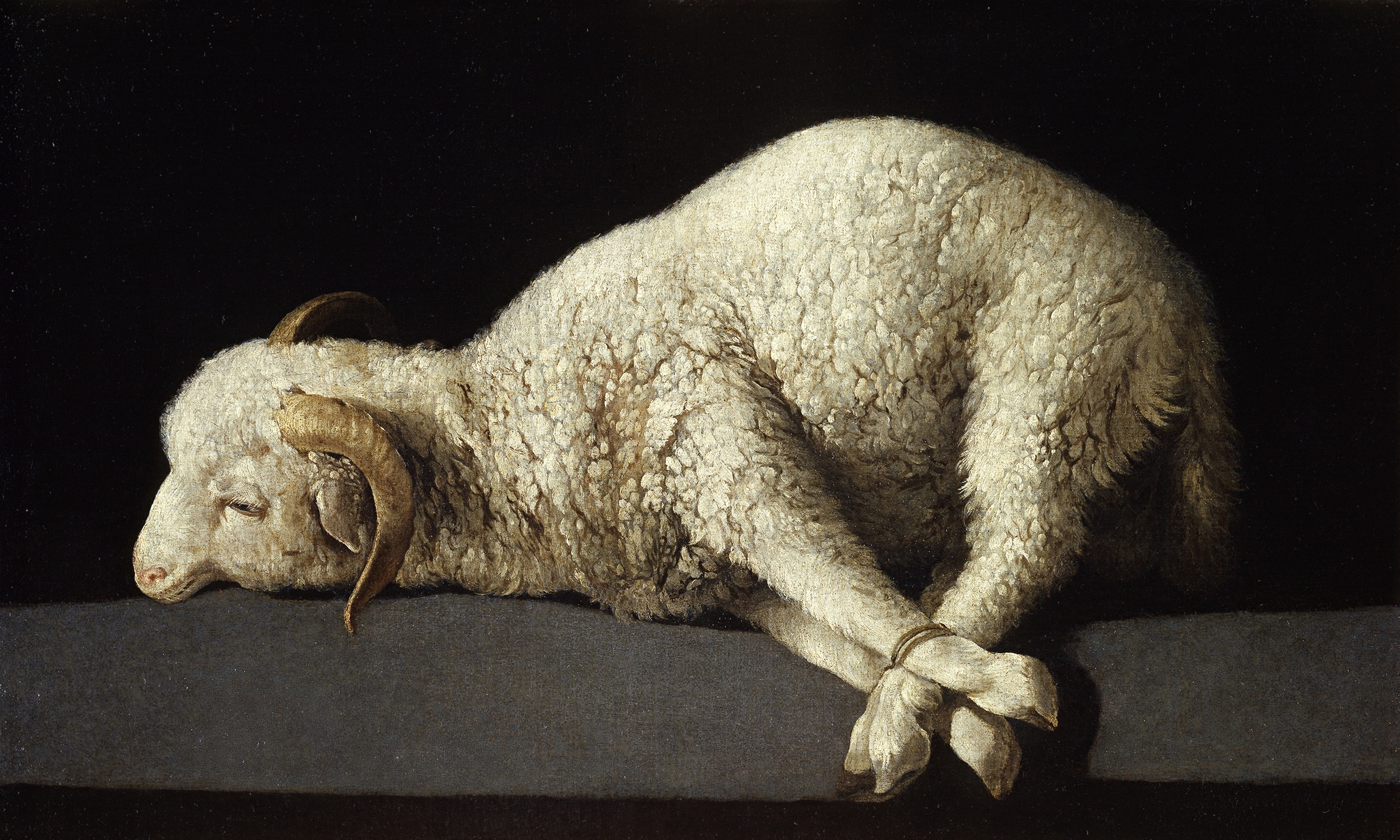
It is known as the "Paschal Mystery" because it is the ultimate fulfillment of the ancient Jewish Passover (or Pasch), which itself was a recollection of how God brought the Jews out of their slavery in Egypt. The spotless lamb was slaughtered at the Passover meal and consumed—that same night the destroying angel "passed over" the homes marked with the blood of the Passover Lamb, and those covered by the Blood were saved. This was the Old Testament prefigurement of Jesus' work at the Last Supper—where he inserted himself as the Paschal Lamb—and Calvary, where the sacrifice was offered to save us from our slavery to sin. With the Holy Eucharist, we consume the victim that died for our sins.
The Paschal Mystery is, therefore, God's plan of redemption for the fallen human race through the passion, death, and resurrection of the God-man Jesus Christ. It is one marvelous event stretched out over three days.
Here is a breakdown of each of the three days that make up the Easter Triduum.
HOLY THURSDAY
The evening Mass on Holy Thursday is referred to as The Mass of the Lord's Supper. This is where the Church re-lives the institution of the Eucharist and the Holy Sacrifice of the Mass at the Last Supper, as well as the institution of the priesthood, which took place the evening before Jesus was crucified.
After the homily there is an optional "washing of the feet" ceremony, where the priest washes the feet of others to signify his role as servant—just as Jesus did with his disciples. Extra hosts are consecrated at this Mass to be used on Good Friday when no Mass will be celebrated.
The Mass of the Lord's Supper on Holy Thursday concludes with a procession of the Blessed Sacrament to the "altar of repose," a place where the consecrated Host is kept, away from the main altar where Mass is normally celebrated.
Many parishes will create space for people to stay and pray with the reposed Eucharist at this altar of repose late into the night, remembering Jesus' request in the Garden of Gethsemane for someone to "watch and pray" with Him.
GOOD FRIDAY
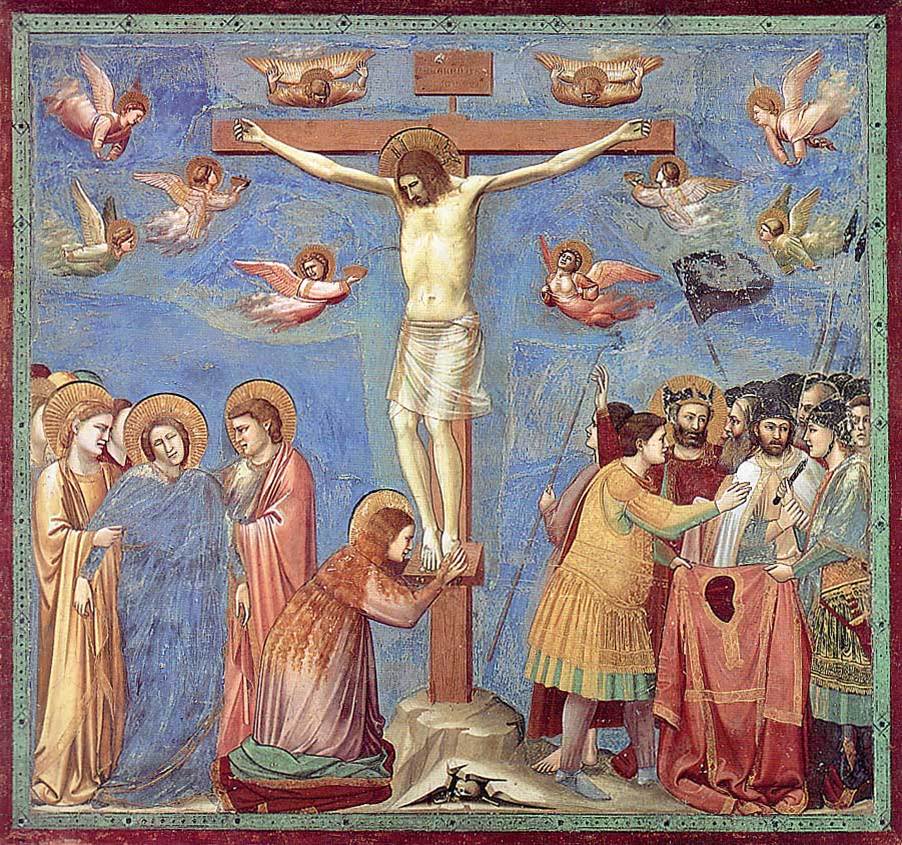
Good Friday is a mandatory day of fasting and abstinence. This is the day of the crucifixion, the day Jesus died for the sins of the world.
The parish altar looks very different on Good Friday: it is plain and bare. There is no consecrated Host in the tabernacle at the main altar of the church; it was carried away on Holy Thursday night to the "altar of repose" to signify Jesus' death. The candle by the tabernacle is blown out, and the tabernacle doors are left open to show that it is empty. Jesus is gone. This is quite dramatic, reminding us that Good Friday is a solemn day of mourning and prayer.
The ceremony on Good Friday is not a Mass—it is a communion service using the consecrated hosts from Holy Thursday. Good Friday is the only day of the year on which no Masses are offered.
These Good Friday services often take place at 3 p.m., the hour that Jesus breathed his last on the cross. Often the priest will begin the service by prostrating himself in front of the altar. Veneration of the Cross usually takes place at this service, in which the priest and the faithful kneel before a cross and kiss it.
HOLY SATURDAY
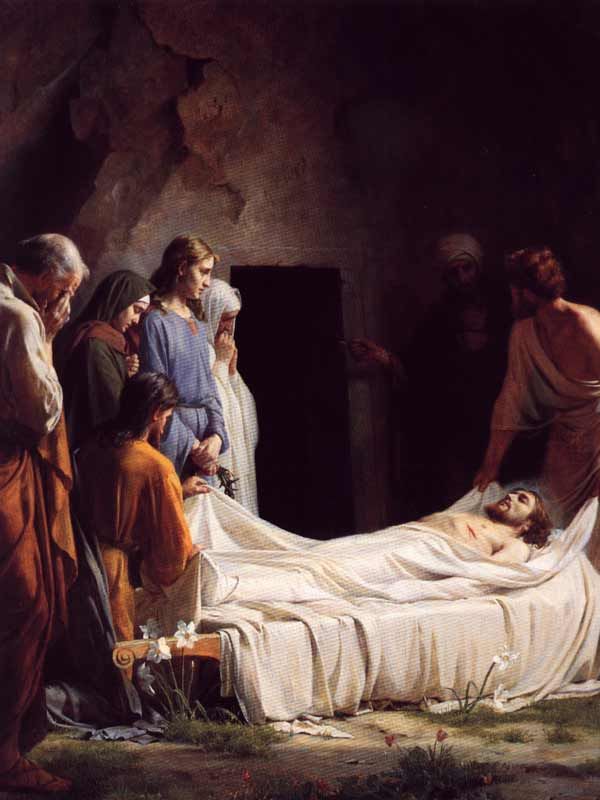
On this day Christ is in the tomb.
There is no daytime Mass on Holy Saturday. It is still a day of fasting and sorrow before the Easter Vigil begins that evening. We recall, with Mary and the disciples, that Jesus died and was separated from them for the first time as He lay in the tomb. The faithful often continue their Good Friday fast through Holy Saturday.
In the Apostles Creed we pray "He descended into hell" (translated hades, that is, the temporary abode of the dead—not the eternal lake of fire) which describes what Jesus did in the time between his burial and Resurrection. Jesus descended to the realm of the dead on Holy Saturday to save the righteous souls—the Old Testament patriarchs, for example—who died before his crucifixion.
The Catechism of the Catholic Church calls Jesus' descent into the realm of the dead "the last phase of Jesus' messianic mission," during which he "opened heaven's gates for the just who had gone before him." Before Holy Saturday, there were no souls enjoying the beatific vision of God in heaven!
Christ's work on Holy Saturday is also known as the "Harrowing of Hell."
EASTER VIGIL / EASTER SUNDAY
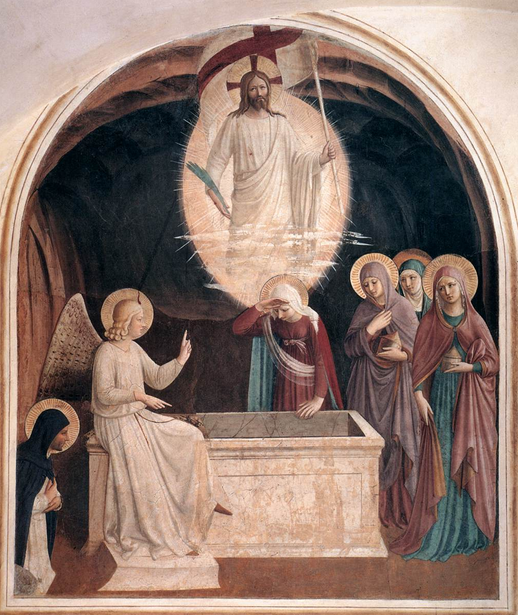
A vigil Mass is held after nightfall on Holy Saturday, or before dawn on Easter Sunday, in celebration of the resurrection of Jesus. This is called the Easter Vigil: the most glorious, beautiful, and dramatic liturgy for the Church.
The vigil is divided into four parts and can last up to three hours: 1) the Service of Light, 2) the Liturgy of the Word, 3) the Liturgy of Baptism, and 4) the Liturgy of the Eucharist.
This is also the Mass in which many RCIA catechumens are brought into full communion with the Catholic Church. Read more details about each part of the marvelous Easter Vigil here.
CELEBRATING EASTER FULLY
Easter Sunday is what we've all been waiting for! The forty days of prayer, fasting, and almsgiving during Lent was in preparation for this day, when our hearts and souls can drink in deeply the culmination of the Paschal mystery: the Resurrection.
"Therefore Easter is not simply one feast among others, but the 'Feast of feasts', the 'Solemnity of solemnities', just as the Eucharist is the 'Sacrament of sacraments'. St. Athanasius calls Easter 'the Great Sunday' and the Eastern Churches call Holy Week 'the Great Week'. The mystery of the Resurrection, in which Christ crushed death, permeates with its powerful energy our old time, until all is subjected to him."
—The Catechism of the Catholic Church, 1168 and 1169
To meditate more deeply on the Sacred Triduum, scroll below to read a profound Easter sermon by St. John Chrysostom, the golden-tongued Doctor of the Church.
To celebrate the Sacred Triduum fully, check your local parish bulletins for liturgy times on Thursday, Friday, and Saturday of Holy Week.
If you already participate in the Easter Triduum each year, what is your favorite part?
Does your parish have any other special traditions during the Triduum?
Please leave a comment below!
Read next: My Photo Journey Through the Easter Triduum
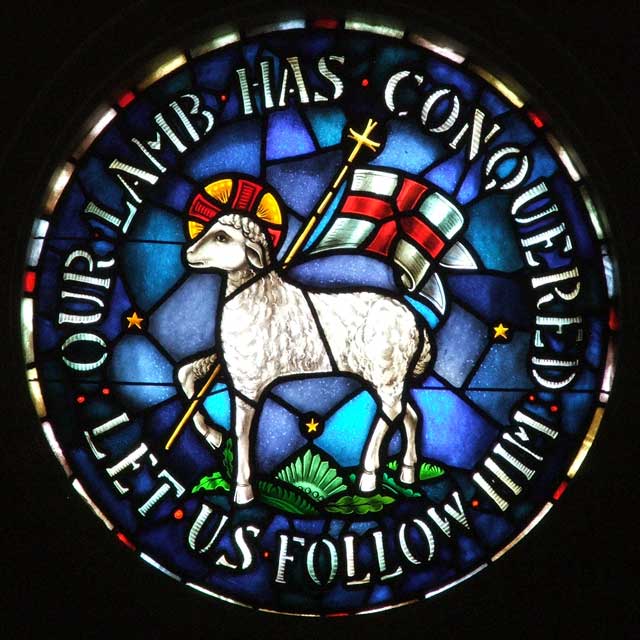
FROM AN EASTER SERMON OF ST. JOHN CHRYSOSTOM
Let all then enter the joy of Our Lord!
Both the first and the last,
and those who come after, enjoy your reward!
Rich and poor, dance with one another,
sober and slothful, celebrate the day.
Those who have kept the fast and those who have not,
rejoice today, for the table is richly spread.
Fare royally upon it-the calf is a fatted one.
Let no one go away hungry.
All of you, enjoy the banquet of faith!
All enjoy the riches of His goodness.
Let no one cry over his poverty,
for the universal Kingdom has appeared!
Let no one mourn that he has fallen again and again,
for forgiveness has risen from the grave.
Let none fear death, for the death of our Savior has set us free.
He has destroyed it by enduring it.
He spoiled the power of hell when he descended thereto.
Isaiah foretold this when he cried,
'Death has been frustrated in meeting him below!'
It is frustrated, for it is destroyed.
It is frustrated, for it is annihilated.
It is frustrated, for now it is made captive.
For it grabbed a body and discovered God.
It took earth and behold! It encountered Heaven.
It took what was visible, and was overcome by what was invisible.
O Death, where is your sting?
O Death, where is your victory?
Christ is risen, and the demons are cast down.
Christ is risen, and life is set free.
Christ is risen, and the tomb is emptied of the dead.
For Christ, having risen from the dead,
is become the first-fruits for those who sleep.
to Him be glory and power forever and ever! Amen.
Alleluia! Alleluia! Alleluia!
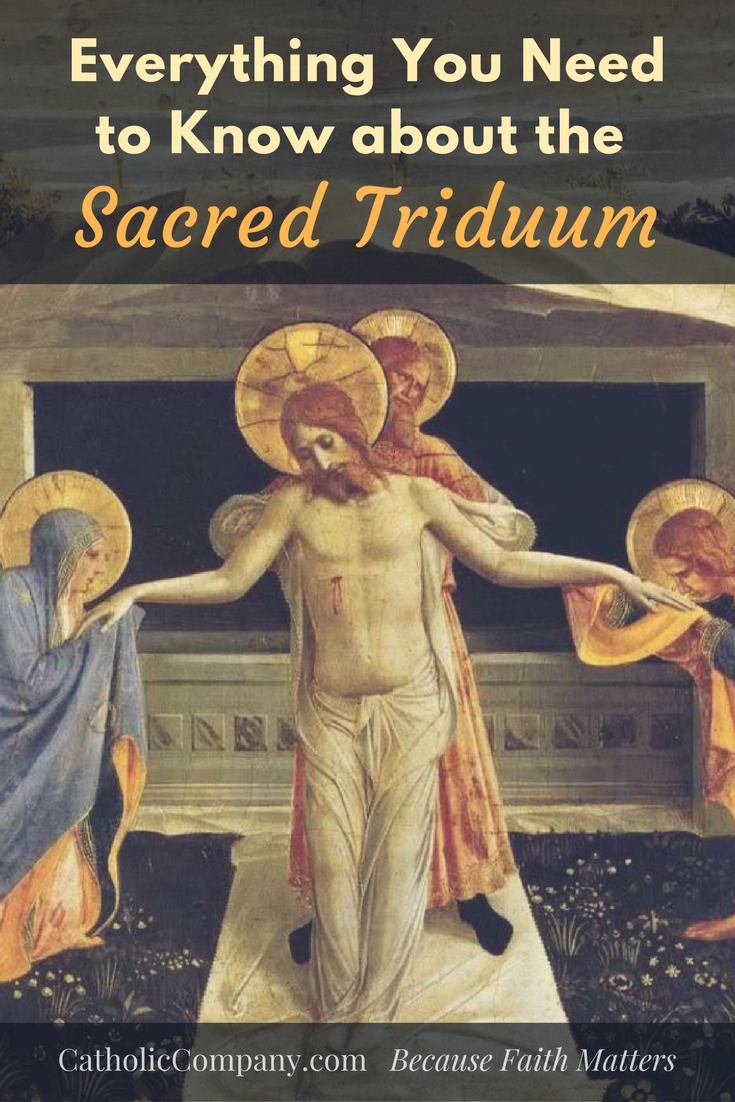
This article has been updated. It was originally published in March 2013. © The Catholic Company. All rights reserved.






